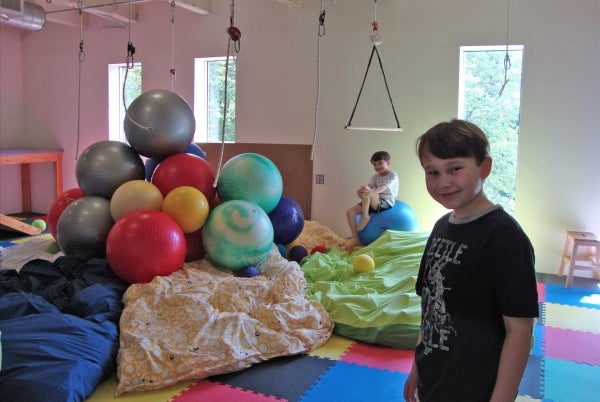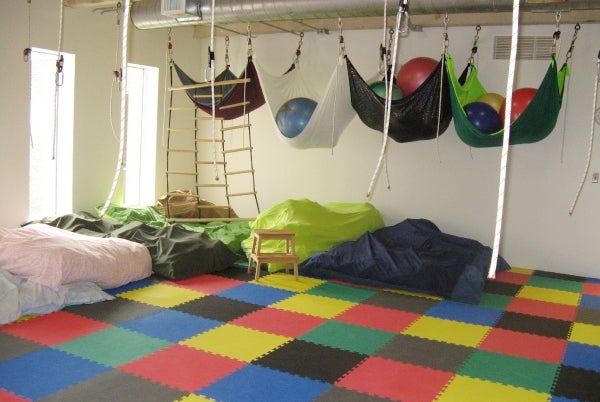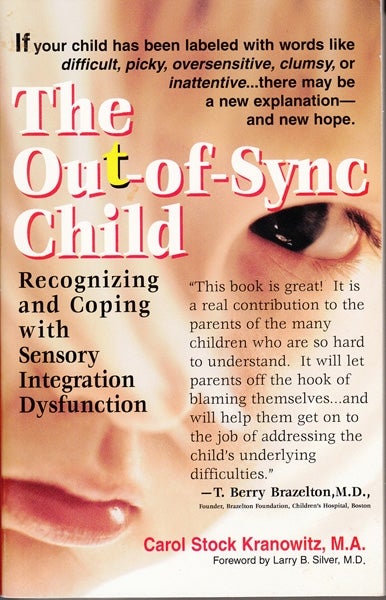If it’s not autism, what is it?
When a child isn’t hitting developmental milestones such as crawling, walking and talking, parents worry and start looking for answers. They might get a diagnosis of autism or pervasive developmental delay.
But what if that isn’t it? What could be the cause, and what will help a child? Many experts believe that problems with “sensory processing” are at the root of developmental delays.
We process millions of sensory inputs every day–the sound of traffic, lights, clothes touching our skin, the size of the desk we walk by. Our brains organize and prioritize this information for us, but what happens when this process isn’t working?
The late Dr. Stanley Greenspan, an influential expert on child development, used to explain that a child’s senses are their windows to the world. If those windows aren’t clear, or are blocked in some way, development may not happen as smoothly as it could.
For example, a person with sensory processing problems may not be able to tell where they are in relationship to a wall or a desk. They might experience lights as very bright, noises as very loud. The way a sweater feels on their skin could, for them, be unbearable.
The way they experience the world can cause them to withdraw, to be anxious, unable to sit still or to concentrate.
Most experts agree that all those with autism have sensory processing issues, but not all people who have sensory processing issues have autism. Often, they get a diagnosis of autism because some of their problems look similar–but traditional autism therapies may not be best for them.
Kristina Stroh, a Delaware mother of three, came across Greenspan’s work when she was trying to help her middle son, Erik. As a toddler, he had trouble talking.
Stroh remembers that he didn’t ever progress to the area where verbal speech made a lot of sense. Erik would try to do estimations, and to do his best with gestures and cues. Over time, doctors and Stroh saw that he was pulling away and shutting down.
Erik also had trouble with motor skills. After reading Greenspan’s work, Stroh became convinced that sensory processing problems were at the root of her son’s troubles. When she sought out specific therapies, she found none were available in her region. During an appointment with Greenspan in Washington, D.C., he encouraged her to forge her own path. Greenspan told her that if she couldn’t find the right place for Erik, she had to create it herself.
“So we literally drove back up I-95, and we said this is it, we need to make a clinic, and we need to help other kids as well, because we certainly can’t be the only family who needs this help,” Stroh said.
So Stroh founded “All the Difference,” a nonprofit service provider in Wilmington, Del. She filled rooms with jungle gyms, swings and huge-foam-filled cushions. Children with all kinds of developmental delays, including autism, come in for therapy sessions based on Greenspan’s research. After his death his son, Jake, continues the work.
The approach includes therapy sessions called “floor time,” a way of communicating and interacting with a child that encourages them to be the thinker.
Fun and play are very important in the sessions–and to keep the kids motivated, they get to set the agenda. Jake Greenspan explains that floor time might look like play, but each interaction has a purpose.
“A child wants to get a toy off the shelf, so instead of the child indicating that they want to toy, and us grabbing it, we can turn this into a rich interaction where the child has to take us by the hand, they have to push us over to the shelf,” he said. “We might pretend we don’t know what they want, they might gesture to the toy, they might even say ‘blue ball.’ “
Parents are often part of the sessions–and the therapy continues at home.
Jaime Tae, the lead occupational therapist at All the Difference, said having the families involved in the therapy process is very important.
“They need to be able to take this with them,” said Tae. “This is not something that just happens here, it has to happen elsewhere, in other environments, wherever they are going to be.”
Christa Burch of Delaware said she has seen major improvements in her son Palmer since they started using this approach. Palmer was originally classified as severely autistic, but Burch said he has come a long way since then.
She summed up the most rewarding part of his process: “He says ‘I love you’ now.”
The “floor time” approach is not as well known as other therapeutic interventions, such has applied behavioral analysis, which has become the gold standard of sorts in treating kids with autism. But the staff at All the Difference is convinced that, for many kids, their approach can be very helpful.
WHYY is your source for fact-based, in-depth journalism and information. As a nonprofit organization, we rely on financial support from readers like you. Please give today.














